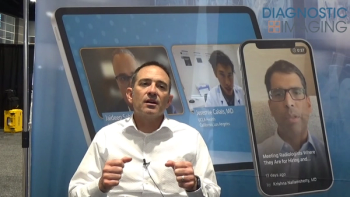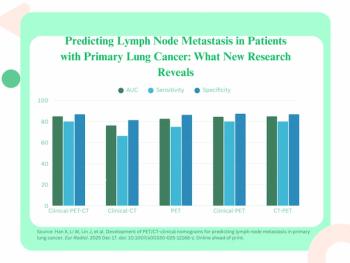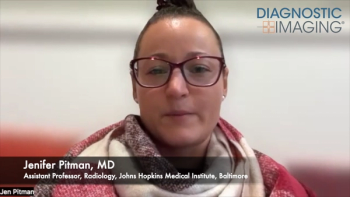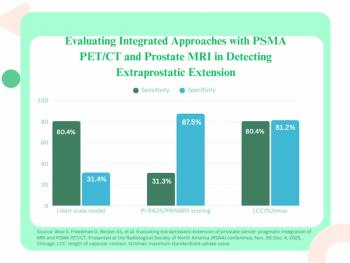
FDA clears Surgi-Vision’s MRI mini-coil invasive probes
MRI coil developer Surgi-Vision has added a second member to its family of miniature, minimally invasive MRI probes with FDA clearance of an endo- esophageal device, called Stylet. In the wake of this clearance, the Columbia, MD, company has begun
MRI coil developer Surgi-Vision has added a second member to its family of miniature, minimally invasive MRI probes with FDA clearance of an endo- esophageal device, called Stylet. In the wake of this clearance, the Columbia, MD, company has begun fitting together pieces of a marketing plan that makes GE Medical Systems a distributor of the product while reserving Surgi-Visions right to sell directly to end users.
The FDA decision, announced April 5, is the second such clearance the company has received in six months. The first, obtained in September 1999, was issued for the Endoesophageal Magnetic Resonance Imaging Coil (EEMRI). Both single-use probes are threaded through the patients nose and into the esophagus. They are designed to improve MRI visualization of esophageal tissues, as well as the aorta and posterior heart wall.
The two differ primarily in their use of external sheathing. EEMRI is permanently sealed inside a nasogastric tube. Stylet, on the other hand, remains inside a sleeve during insertion, but then slips out the front of its casing after arriving at the site to be visualized. This exposes the imaging coil more directly to tissue, eliminating the surface interference characteristic of traditional MRI and thereby improving image quality, according to the company.
Stylet provides a 60% greater signal-to-noise ratio of the aorta and cardiovascular regions, said Nancy Taylor, president and CEO of Surgi-Vision.
EEMRI has the advantage of being sealed inside a tube.
The choice depends on your physicians comfort in using an exposed antenna versus a completely sealed device, Taylor said.
Although cleared by the FDA, neither product has yet been sold commercially. Surgi-Visions strategy is to expand the coil family with several more products before any are brought to market. These coils will support a wide range of applications, including visualization of the urethra, prostate, and circulatory system. A coil designed specifically for women patients will be submitted to the FDA for clearance within the next couple of weeks. One for the male urethra could be submitted for clearance within two months. A prostate coil is expected to be submitted soon after.
Doing a joint product launch can maximize our exposure to the marketplace, Taylor said.
The coils will be put in the hands of GE Medical Systems sales representatives under a two-year renewable distribution agreement struck earlier this year. The agreement gives GE exclusive rights among equipment vendors to the miniature MRI probes. In addition to sales, GE will market and promote the products and help train end users.
We believe this is the best way to get these products outreserving our money for research and development while working with a very large sales and distribution organization, Taylor said.
The agreement, however, allows Surgi-Vision to sell its probes directly to end users, regardless of the type of equipment they own, including GE scanners. The company is already laying the groundwork for such an effort. Surgi-Vision engineers are working with staff from Siemens Medical Systems and Philips Medical Systems to make the coil electronics compatible with scanners from these companies. A primary focus is developing an interface that allows signals obtained using the mini-coil to be interpreted properly by these two companies scanner computers.
In developing its products, Surgi-Vision has access to internal resources as well as those at the Johns Hopkins Medical Institutions, where the early research leading to these coils was conducted. Two cofounders and current officers of Surgi-Vision, Ergin Atalar, Ph.D., and Paul Bottomley, Ph.D., serve on the Johns Hopkins faculty. Bottomley is a professor and director of MR research; Atalar is a professor of both radiology and biomedical engineering.
This academic/corporate brain trust extends to clinical research, as coil capabilities are constantly being refined. Cardiac applications represent a major focus. Johns Hopkins researchers are currently immersed in the study of the aortas of 60 patients being treated with lipid-lowering therapy. Using Stylet-enhanced MRI, the researchers are observing and examining changes in plaque volume and composition in these patients.
Immediate plans are to develop the diagnostic capabilities of the technology, but eventually these probes might be used in conjunction with interventional products. Surgi-Vision executives hope to license minimally invasive therapeutic devices that will complement their coils.
Were very interested in new and emerging technologies, Taylor said.
Newsletter
Stay at the forefront of radiology with the Diagnostic Imaging newsletter, delivering the latest news, clinical insights, and imaging advancements for today’s radiologists.




























